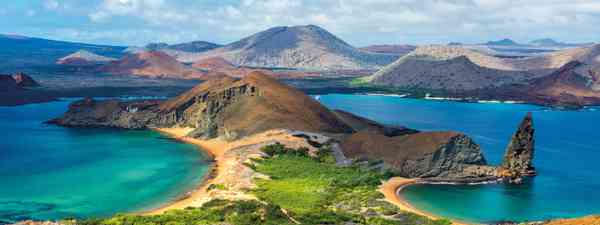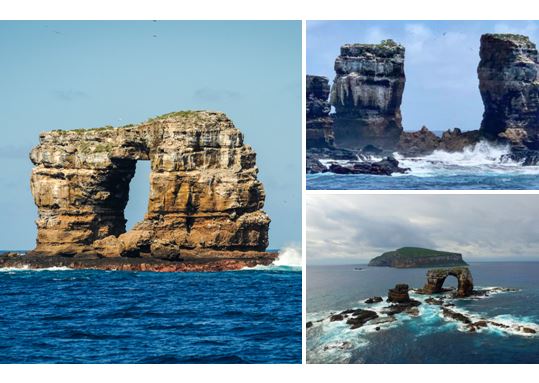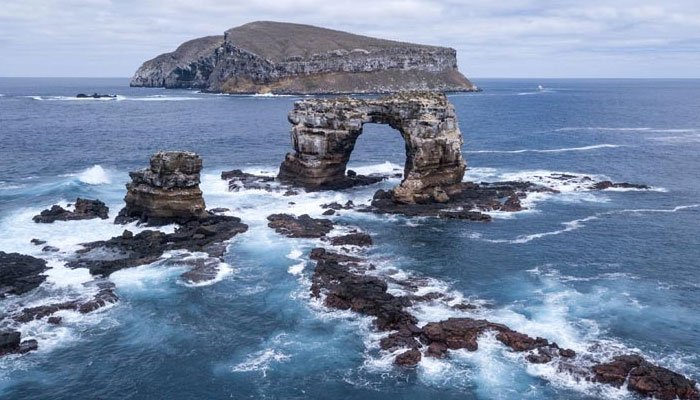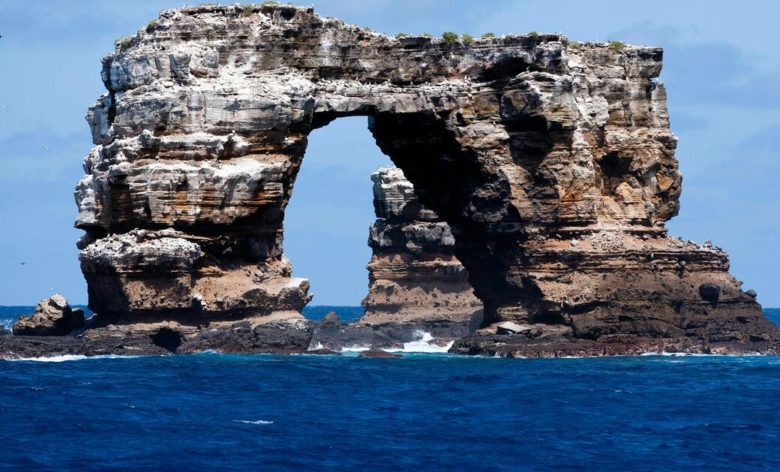The famous rock formation known as Darwin’s Arch has collapsed due to natural erosion. It is found in the northern part of the archipelago and named after the English biologist Charles Darwin who was inspired at Galapagos to compose his famous theory of evolution.

The following written content from DW
Boat tourists in the Galapagos reportedly saw Darwin’s Arch collapse into the Pacific Ocean. The unique rock formation, named after the British naturalist Charles Darwin, was often compared to France’s Arc de Triomphe.
“Natural erosion” triggered the collapse of Darwin’s Arch in the Galapagos Islands, Ecuador’s Environment Ministry said.

Images distributed Tuesday show only two rocky pillars left at the northernmost island of the Pacific Ocean archipelago, which lies 1,000 kilometers (600 miles) off the South American continent.
The iconic arch is famed as a diving spot for underwater encounters with sea turtles, whale sharks, manta rays and dolphins. Diving website Scuba Diver Life said visitors on a diving boat witnessed the collapse just before midday local time, on Monday, adding that no divers were harmed.
The rock formation was named after British scientist Charles Darwin, who visited the islands in 1835 on the HMS Beagle and developed the theory of evolution by examining Galapagos finches.
UNESCO declared the area a Natural World Heritage zone in 1978. The Galapagos archipelago comprises 234 islands, inlets and rocks, and boasts unique flora and fauna not seen anywhere else on earth. Human settlement is restricted to four islands that are home to some 30,000 residents.

The marine reserve, located at the confluence of three ocean currents, is described on UNESCO’s website as a unique “living museum and showcase of evolution.”
“The collapse of Darwin’s Arch, the attractive natural bridge found less than a kilometer from the main area of Darwin Island, was reported,” the ministry said in a statement.
The ministry said its collapse was a “consequence of natural erosion” and images distributed by officials show that only the two stone supporting columns remain. Read more from DW





